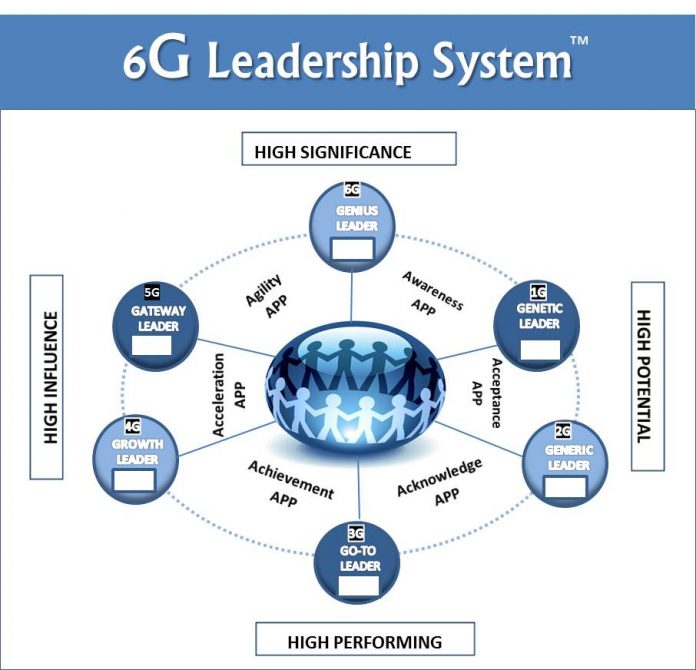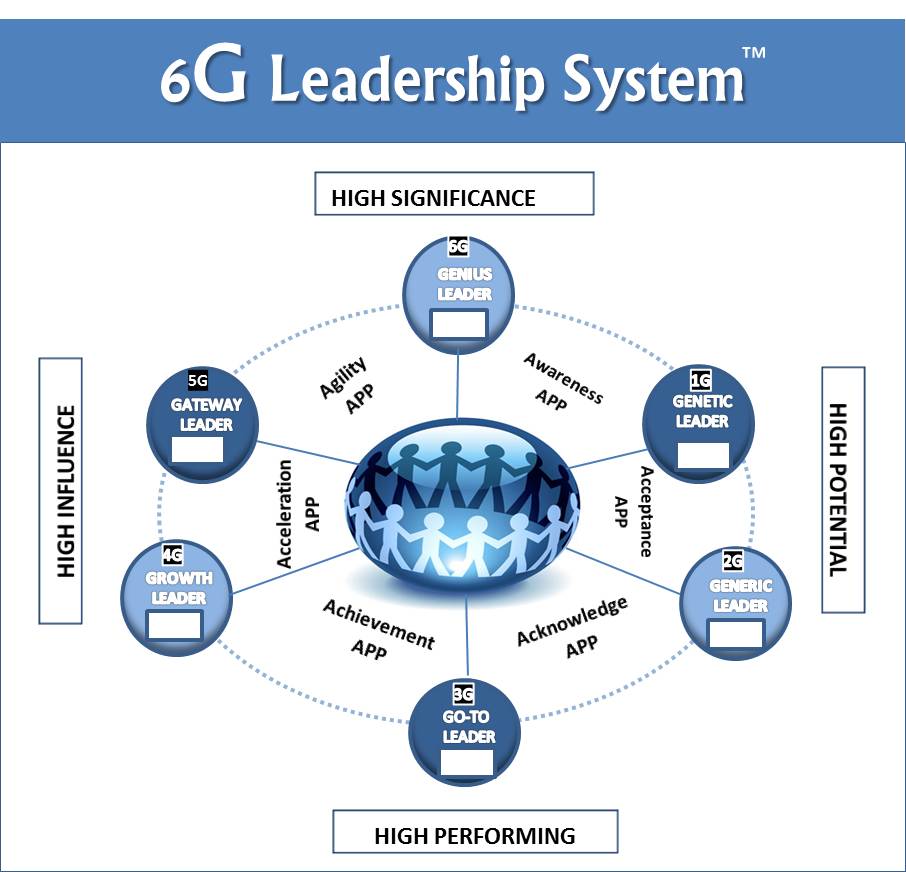
“When I let go of what I am, I become what I might be.” —Benjamin E. Mays
The 2G–Generic Leader is the second network in the 6G Leadership System. Out of all of the leadership networks defined in this book—1G–Genetic; 2G–Generic; 3G–Go-To; 4G–Growth; 5G–Gateway; and 6G–Genius—the 2G–Generic Leaders have traits and behaviors that are easily identifiable compared to those without these behaviors.

Expanding from the 1G to 2G Leadership Network requires two simple but challenging things: First, you must be in a state of full acceptance of your leadership potential by releasing it into demonstrable leadership actions. Second, others must accept your leadership role. Acceptance of your leadership role by others can come from a promotion into a formal supervisory or management role, or through an informal role such as a team lead, area lead, floor lead, department lead, project lead, or lead position in a non-management title.
Overview of the Generic Leader
Generic Leaders are general leaders who have accepted their accountability to lead. They direct activities and assignments very well, and monitor progress. However, they struggle with identifying process challenges and issues given their commitment to timelines.
Generic Leaders like to control the decision-making process. But when it comes to group thinking and collaborating to solve cross-boundary issues, they may become inflexible given their emotional ties to the process.
Generic Leaders enjoy working in small teams and environments, but their need to be in charge may limit the growth of others.
Maximum Potential—realized in routine complex situations requiring specialized knowledge or skill.
Least Potential—created in an environment that requires creativity, collaboration, and diverse teams.
Core Leadership Value to Teams and Professionals:
Professionals value you because you accept leadership. Professionals allow you to lead because you are accepted by others as leaders.
- Directs activities, tasks, functions, and/or assignments.
- Prefers to control decision-making.
- Solicits feedback before taking significant action.
- Team player and high-potential professional.
As you review this network, celebrate your value and get excited about expanding to the next network to overcome any visible limitations.
Generic Leader Traits
Review each of these traits and indicate those that resonate with your actions, behaviors, and habits by providing a score between 5 (often), 3 (sometimes), or 1 (rarely) on each trait.
Generic Leaders:
- Usually are in a management function or lead role.
- Are proven in leading teams and are seasoned individual contributors.
- Are often high potentials.
- Typically answer to intermediate leaders who use general, common, and traditional leadership principles and styles.
- May rely on authority, title, and rank to accomplish goals and objectives.
- Constantly deliver work completeness and accuracy through teams.
- Have been given authority to lead others.
- Have fully accepted demonstrating their potential.
- Resemble the management styles of their boss or operating leadership culture.
- Take action but solicit feedback on matters of significance.
- Often may become slightly stressed and frustrated in highly political organizations.
- Like challenges.
- Limit risk-taking and may question leadership direction.
- Aspire to be good leaders.
- Conduct causal analysis to solve business issues.
- Are highly structured.
- Shine when working in tight timeframes and have independent autonomy.
- Use common and general approaches to leadership. Change and chaos can be their worst enemy.
Features of the Generic Leader
Just as in the 1G–Genetic Leader section, the 2G–Generic Leader Network has features that add significant value to those who operate on the 6G Leadership System. Each of the networks from 1G–6G works together to produce leadership.
2G–Generic Leader, in many instances, is the dominant network that most professionals who are given leadership responsibility reside on. Most Generic Leaders are in management positions; however, CEOs and officers operate on this network, as well, and, in many instances, it is their primary residence because they lead based on position, title, and rank.
Remember, if this is not your dominant leadership network, it is critical that you still understand how the network operates so that when you interact with others who are predominately Generic Leaders, you will be able to develop skills to better connect with them. Also, factor in that they could be your boss or work for you, now or in the future.
Generic Leaders Are Accepted by Others to Lead
The 6G Leadership System is designed to produce Generic Leaders who operate on the 2G Network because, through time, they have demonstrated through their behaviors that they have accepted their leadership potential, and their actions have influenced others to accept them as leaders. More often than not, Generic Leaders have been observed by peers, supervisors, and management as professionals with the ability to lead a task, assignment, function, process, or project well before they are considered for a formal leadership position. They consistently demonstrate their ability to connect, build relationships and oversee professionals.
If you are a 2G–Generic Leader, welcome to the formal leadership network. The best leaders on this network are not successful because they use their appointment or title to accomplish goals and objectives through others. This transactional leadership model—lead for the transaction first, (i.e., results, goals, objective, scorecard) and worry about the people second—goes against the abilities of the Generic Leader. The best leaders use a transformational leadership concept—the acceptance of others to achieve extraordinary results (i.e., people first, and goals, objectives, and results will follow).
Operating on the 2G Leadership Network requires the following personal oath and pledge: Accept your leadership potential; accept your leadership responsibility; and accept the fact that others must accept you as a leader.
Leadership comes at a cost, and that cost is Acceptance of leadership challenges.
Choose the path of acceptance from others. It is the way to expand to the 3G Network and to become a Go-To Leader while achieving significance in professional development, business growth, relationship management, and acceptance.
Excerpt from The Next Gen Leader: Cutting Edge Strategies to Make You the leader You Were Born to Be! by Robert C. McMillan (Career Press, Inc., 2014).
Robert C. McMillan is a leadership coach and consultant to emerging, aspiring, and executive leaders, teams, and organizations. McMillan is also a transformational speaker for organizations, associations, and conferences. His mission is to “Ignite Genius Transformation!”
To learn more about The Next Gen Leader and how you can maximize your leadership potential and the potential of others, visit www.robertcmcmillan.com.




